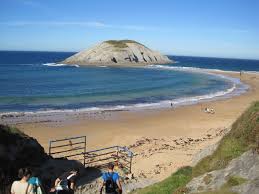Page 5 of 21
Re: Going Round in Circles

Posted:
6:37 amby spiral
I will come back to Amber and Jet. I was studying amber necklaces then I hit on an idea, that recumbent stone circles are really just larger versions of bead necklaces......
Re: Going Round in Circles

Posted:
10:23 amby Mick Harper
Neato! I had much the same vision in TME when I saw the circles as compass faces. So let us perhaps combine the two ideas and suppose that necklaces were originially mnemonic devices. A usage now recalled by the rosary. Or something. Over to you.
Re: Going Round in Circles

Posted:
11:18 amby macausland
Probably nothing in this but far eastern religions also use beads on a string. The number 108 comes up as being significant in many disciplines including tai chi. This entry on wiki has a reference to Stonehenge and a possible connection to 108.
http://en.wikipedia.org/wiki/108_%28number%29
Re: Going Round in Circles

Posted:
7:12 amby spiral
What is becoming clear, is that overland, mentally folks really did go round using circles. Their mental maps were originally circular birdseye spiral view from hills. (the spiral is the easiest most methodic way to remember a hilltop view).
Whilst modern maps thinks in square maps and straight lines, your ancients must have been able to imagine circular maps based on an an overlapping combination of imagined hilltop views. It is a bit like dropping stones in a pool and watching the ripples.
Stone circles help create these maps without going to the top of each hill. Necklaces (small versions of stone circles) are additional memory aids.
Hilltop views, stone circles and necklaces, are really all you need, an ability to imagine the world from above, using high landmarks, circles and necklaces, whilst reading the landscape from the ground.
Of course each stone in the circle, and shell in the necklace, were designed to emphasize difference, this would have enabled better orientation, so you need different shaped and coloured stones and shells.
I will try it out. If I die stumbling into a marsh, it will have been in a good cause.
Say a little prayer........
Re: Going Round in Circles

Posted:
8:10 amby macausland
On the top of many hills the Ordnance Survey built triangulation pillars with a fixture on top for a theodolite and a brass benchmark on the side. These used to be and still may be used to connect to their opposite numbers on each piece of high land around in a big circle.
They don't need to be on very high land, even golf courses and other open areas have them.
Maps are circular in the way they are made even if they are built of triangular elements. The bench marks give a reference point to the height above sea level. So they go round and up and down.
Re: Going Round in Circles

Posted:
5:27 pmby Chad
What is becoming clear, is that overland, mentally folks really did go round using circles. Their mental maps were originally circular birdseye spiral view from hills. (the spiral is the easiest most methodic way to remember a hilltop view).
That's ingenious Spiro... you wiley old critter.
Our ancestors would have had much better spatial memory than ours... just like today's Abos.
Re: Going Round in Circles

Posted:
10:19 amby hvered
Directly south of Burgh (formerly known as Michael) Island is Santander, or rather Isla del Castro. Like Burgh Island it's a tidal island connected by a tombolo, or sandy causeway, to one of the finest beaches in north Spain

It could be that these semi-connected islands are the beads in the necklace of a Great Circle.
Re: Going Round in Circles

Posted:
11:37 amby Mick Harper
A guide book inadvertently gives the game away:
A beautiful and curious beach that is divided into two by a small rocky cliff. The stretch of sand to the left is around 100 metres long, it has fine, golden sand and is overlooked by cliffs. Castro Island lies opposite. The right side of the beach is larger. Nature works in mysterious ways, and has created a layer of sand from the beach right up to Castro Island, which can be reached by foot.
Re: Going Round in Circles

Posted:
11:52 amby hvered
At the coast of Brittany the Burgh - Castro line passes L'île Callot, a tidal island that's accessible at low tide via a sandy causeway called La Passa aux Moutons. It's just west of Roscoff, the modern terminal for the ferry going to Plymouth.
Callot according to my dictionary means a block of unhewn stone from a quarry.
Re: Going Round in Circles

Posted:
12:04 pmby hvered
The island of Callot must be Megalithic, its chapel is said to lie on top of buried of treasure and nearby you can still see the claw-print of a dragon brought by St Carantec, one of the Welsh 'Crannog' saints.